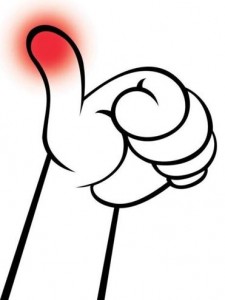By Ruth Graham | The Boston Globe | June 15, 2014
If you stopped the average person in an emergency room and asked why she’s there—not just her guess at the problem, but what really motivated her to show up—the number one answer would be “pain.”

Women are twice as likely as men to suffer from migraines; African-Americans were 1.4 times as likely as whites to report recent pain that interfered with their lives; both white and black test subjects rate blacks’ pain as less intense than whites; women are up to 25 percent less likely than men to receive opiod painkillers when they come to the ER with acute abdominal pain.
For all that modern medicine has learned about disease and treatment, it’s alleviating pain that still lies at the heart of the profession. And in recent years, the notion of treating “pain” as its own entity has been rising to the forefront in medicine. Pain management now has its own journals, conferences, clinics, and specialists, and pain relief is sometimes referred to as a human right. The Institute of Medicine reports there are more than 100 million chronic pain sufferers in the United States, and others have estimated the problem costs $60 billion a year in lost productivity. In September, a coalition that includes the FDA, the CDC, and the NIH is expected to release a long-awaited “National Pain Strategy.”
But as pain rises on the agenda for clinicians and patients, research is uncovering some unsettling facts about how it really affects people. First, not everyone experiences pain similarly. In experiments, women and black people have frequently shown lower pain tolerance when asked to do things like hold their hands in ice water. Gender differences in pain prevalence and intensity emerge in adolescence, and for reasons not fully understood, women are particularly vulnerable to conditions including migraines, back pain, and fibromyalgia. Low-income Americans, too, are more likely to suffer pain than their high-income peers: They are likelier to be engaged in manual labor, to eat poorly, and to go to the doctor less often, to name just a few causes. Among pain patients, blacks and Hispanics are likelier to report their pain is severe.
It’s also clear that not everyone’s pain receives equal attention. A robust and growing body of evidence suggests that the groups who suffer the most also receive less effective treatment for that suffering. Pain is “a huge public health problem,” said Carmen Green, a pain specialist at the University of Michigan who has researched disparities in care. But because a disproportionate number of its victims belong to traditionally disempowered groups, “it’s been a silent epidemic.”
Pain, it appears, is distributed with a kind of inequality distinct from the other inequalities in American health care—one with its own contours, its own logic, and its own disturbing history. And because chronic pain, in particular, often lacks a discrete location in the body, it leaves both diagnosis and treatment almost completely up to a doctor’s own judgment, which brings in a range of subtle prejudices that psychologists and other scholars are only beginning to understand. “Chronic pain greatly exacerbates already existing inequality within society,” said Joanna Bourke, an historian at Birkbeck College in London, whose new book, “The Story of Pain: From Prayer to Painkillers,” makes the intriguing argument that both experiences of and responses to pain have evolved since the 18th century.
Bourke’s book, and the emerging research on pain, suggest that pain mirrors existing prejudices in society in ways that medicine is only beginning to grapple with. There’s no quick route to solving the problem of pain care, and its thorniness suggests that doctors must first face the steep challenge of understanding both the history and psychology of a problem that medicine, often, would rather not talk about.



